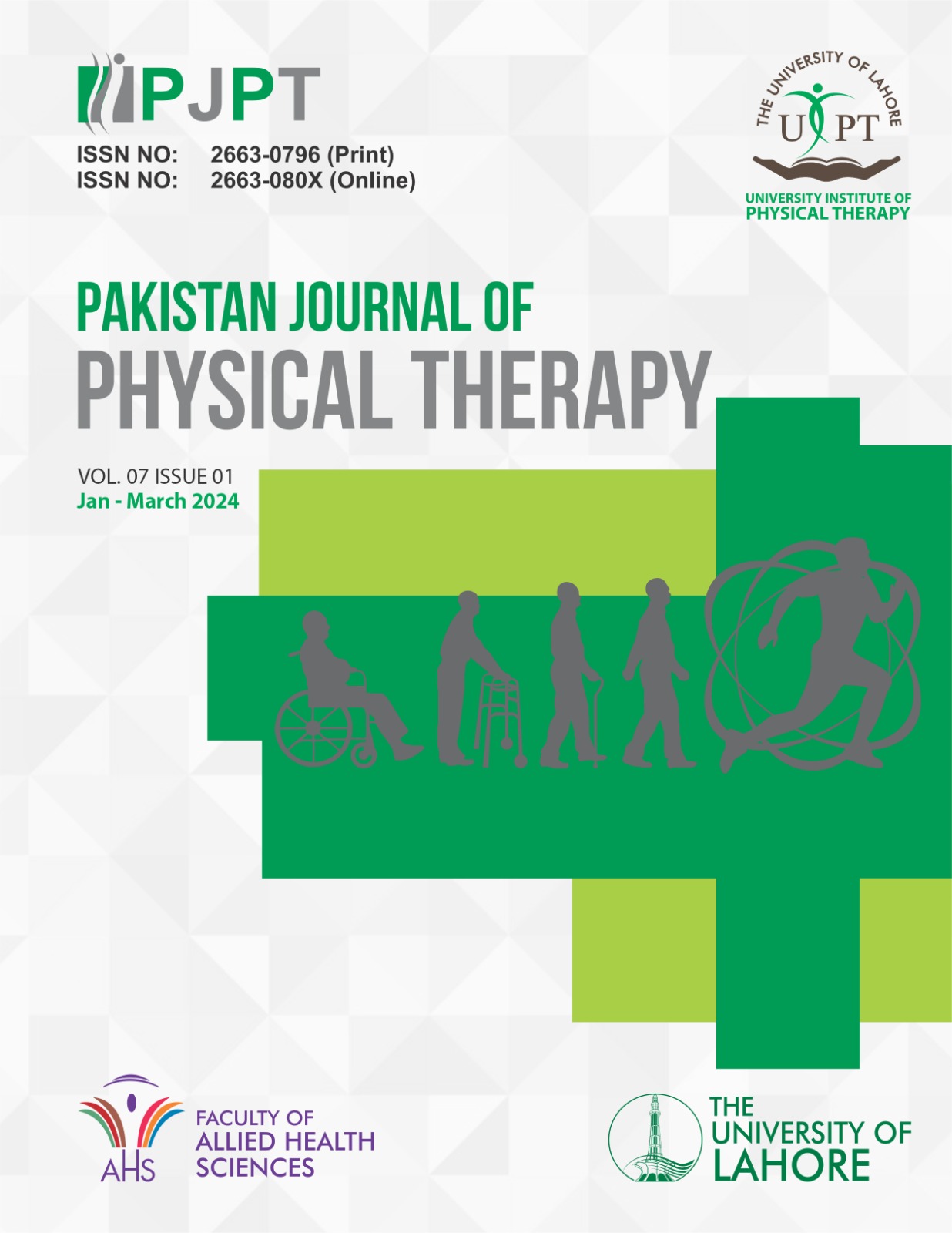BARRIERS TO RENDERING QUALITY ORTHOPEDIC PHYSIOTHERAPY SERVICES IN SEMI-URBAN AREAS AND LOW-RESOURCE SETTINGS
Keywords:
SDH, Orthopedic physiotherapy, Semi-urban, BangladeshAbstract
The prevalence of physical disabilities is high, especially in semi-urban and rural areas in low-resource settings. Objective: The study aims to understand the barriers to delivering orthopedic physiotherapy services to people living in semi-urban areas. Methodology: 301 older people who attended semi-urban physiotherapy centers for treatment purposes were included in this study. Univariate and bivariate analysis is done with the help of statistics like percentage distribution, mean, standard deviation, correlation, and non-parametric tests.
Results: The mean age of respondents is 44±13.86 years and the median is 45 years. The difference in age of patients by sex is statistically significant (x2 = 22.70, p=<.003; df = 14; Cramer’s V = .31). About 89% of respondents were from rural and 11% were from urban areas. There is a strong association between the age of the patients and the type of treatment they received (x2= 21.82; Cramer’s V= .42, df = 8; Sig; P= < .007). About 98% of the patients attended the clinic with Orthopedic problems among them 92% had a history of medication and Physiotherapy. The age of the patient and the occupation of the patient were strongly associated (x2= 29.50; Cramer’s V= .38, df = 11; Sig; P= < .02). The barriers to receiving Physiotherapy services include access to care (58%), availability (55%), affordability (47%), acceptability (41%), distance from health facilities (40%), negative experiences with service providers (38%), and lack of staff and equipment (37%). The factors that adherence to the orthopedic physiotherapy treatment included distance and traveling difficulties (65.4%), high-cost services (33.6%), reluctant to perform exercise (31.6%), long-duration of physiotherapy treatment (31%), in-accessibility of physiotherapy centers and family support (28.6%), tiredness from exercise (16%), exercise are difficult and painful (12.6%), difficult and depressive of physiotherapy services(3.3%) and not benefited due to health co-morbidity (3.7%).
Conclusion: Socio-cultural and SDH adherence levels are the significant barriers that contributed to default on accessing physiotherapy services for aged people in low-resource settings.
Additional Files
Published
How to Cite
Issue
Section
License
Copyright (c) 2024 Pakistan Journal of Physical Therapy (PJPT)

This work is licensed under a Creative Commons Attribution 4.0 International License.



